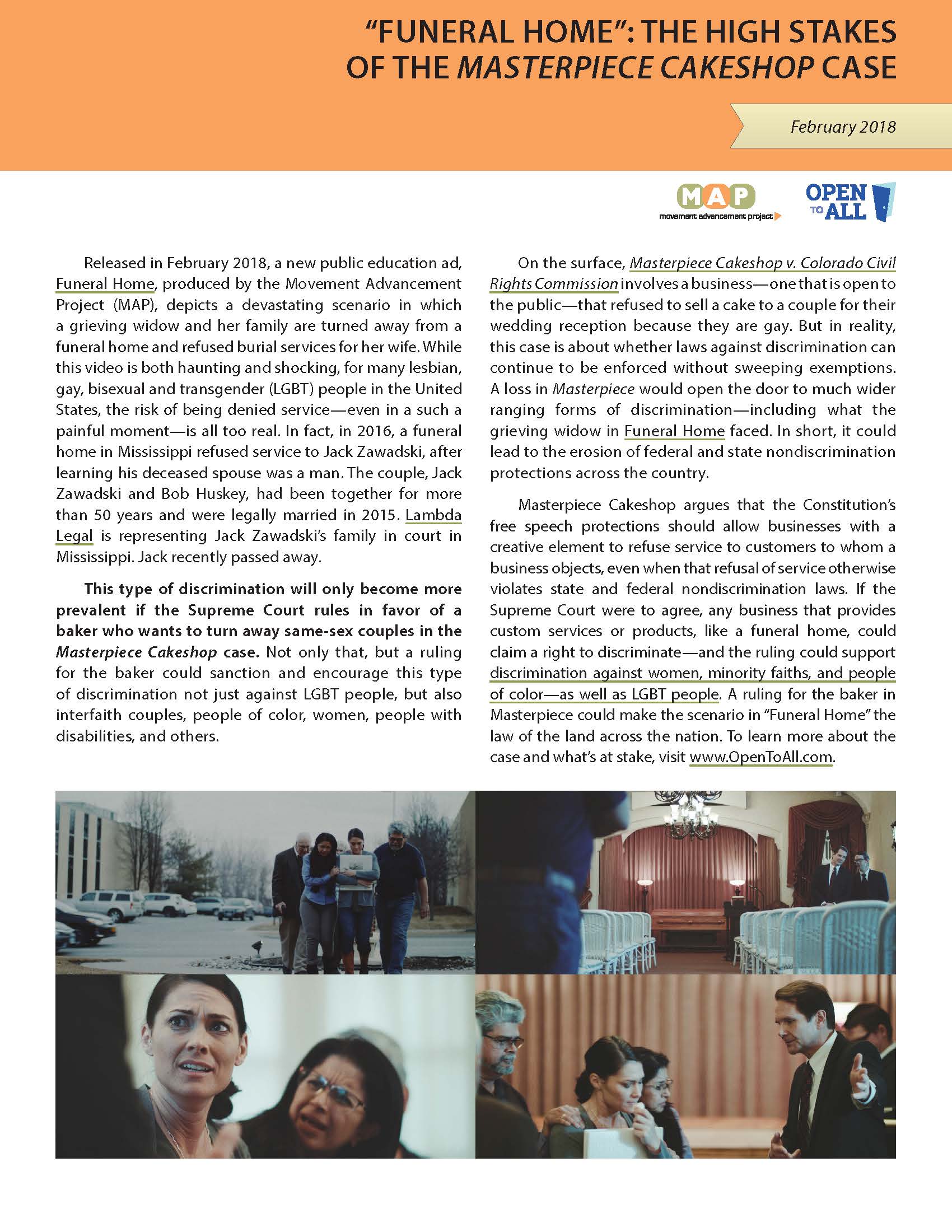The Bottom Line
Released in February 2018, a new public education ad, Funeral Home, produced by the Movement Advancement Project (MAP), depicts a devastating scenario in which a grieving widow and her family are turned away from a funeral home and refused burial services for her wife. While this video is both haunting and shocking, for many lesbian, gay, bisexual and transgender (LGBT) people in the United States, the risk of being denied service—even in a such a painful moment—is all too real. This policy brief outlines how the "Funeral Home" ad depicts the high stakes of the Masterpiece Cakeshop case.
Recommended citation:
Movement Advancement Project. February 2018.
Funeral Home Ad Policy Brief.
https://www.lgbtmap.org/funeral-home-ad-policy-brief (date of access).


